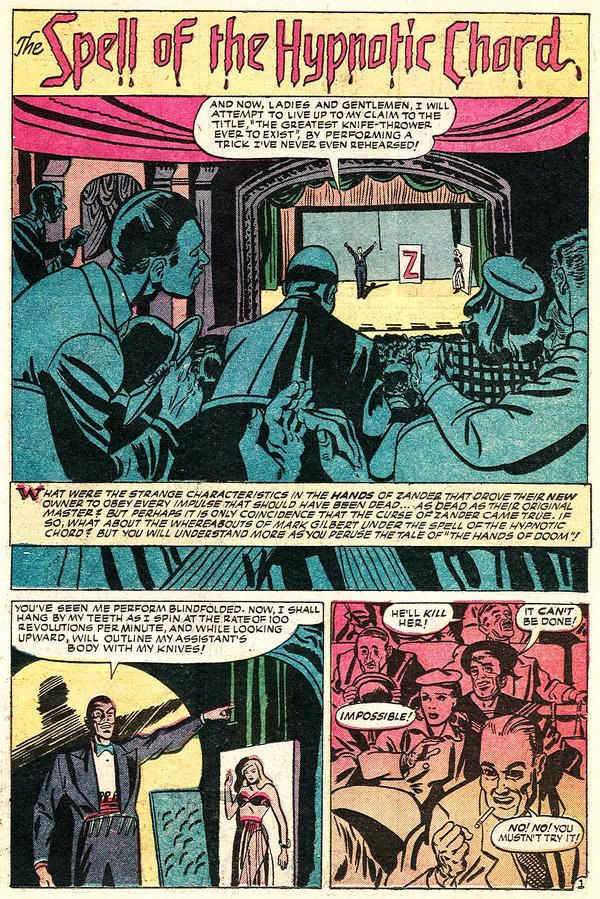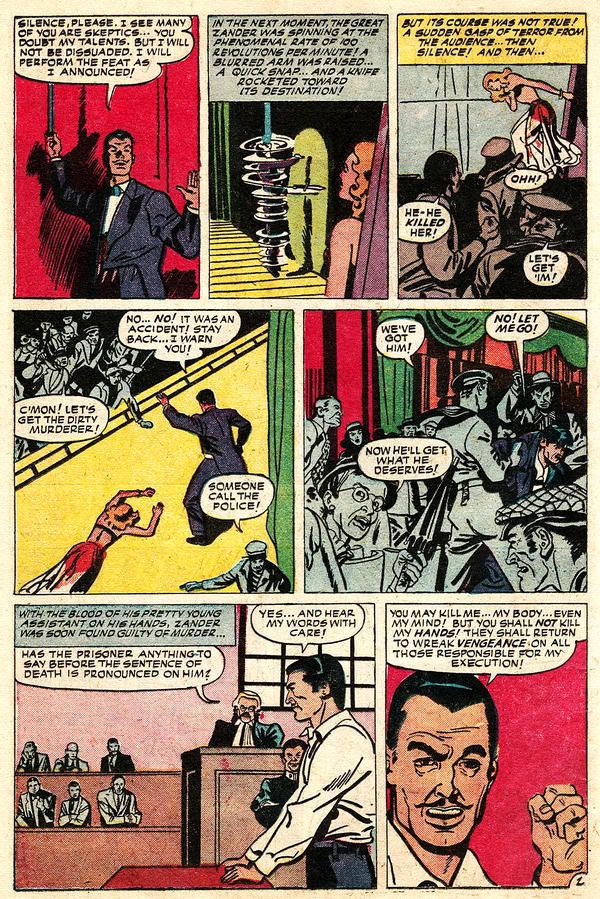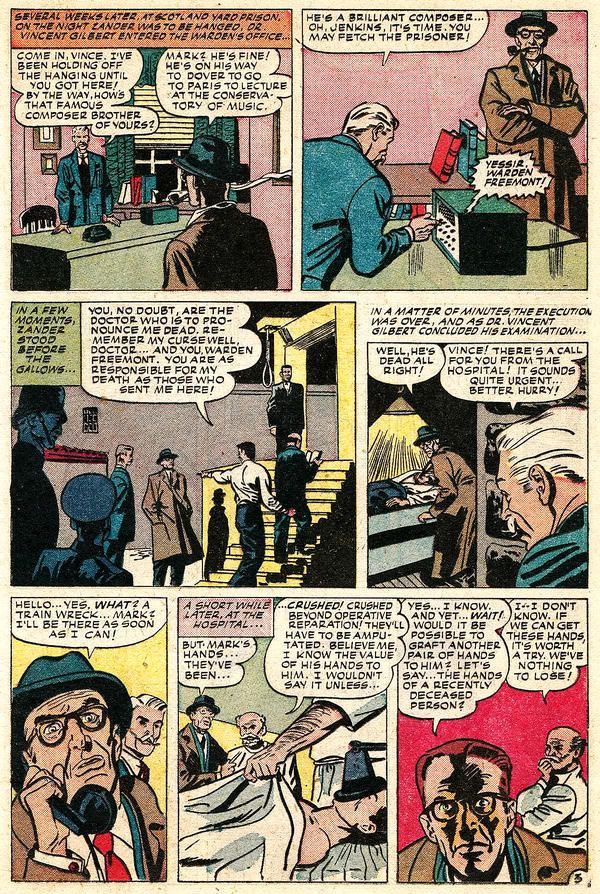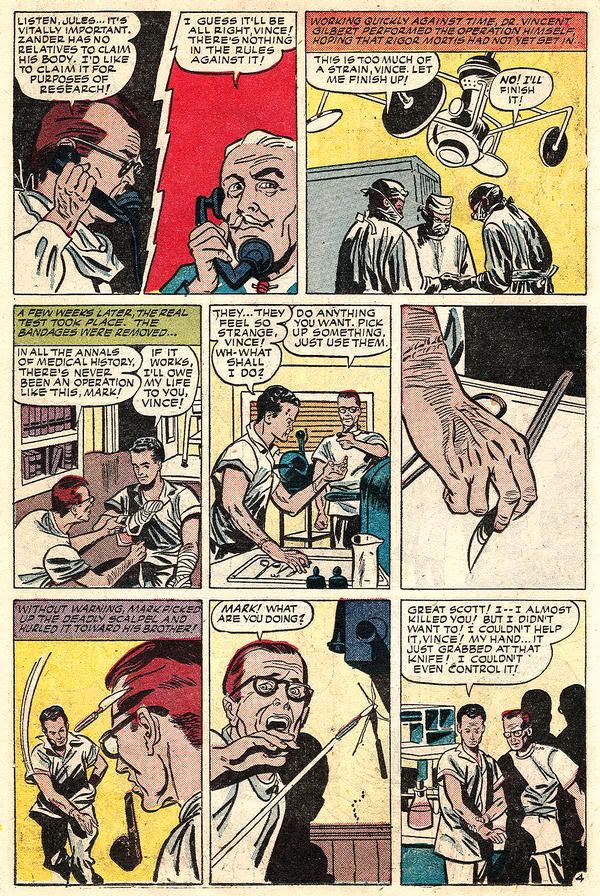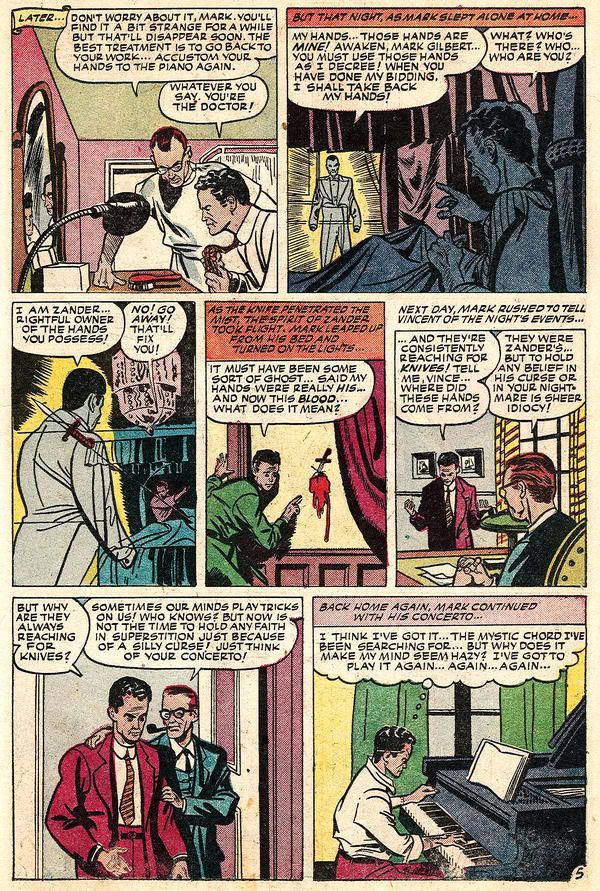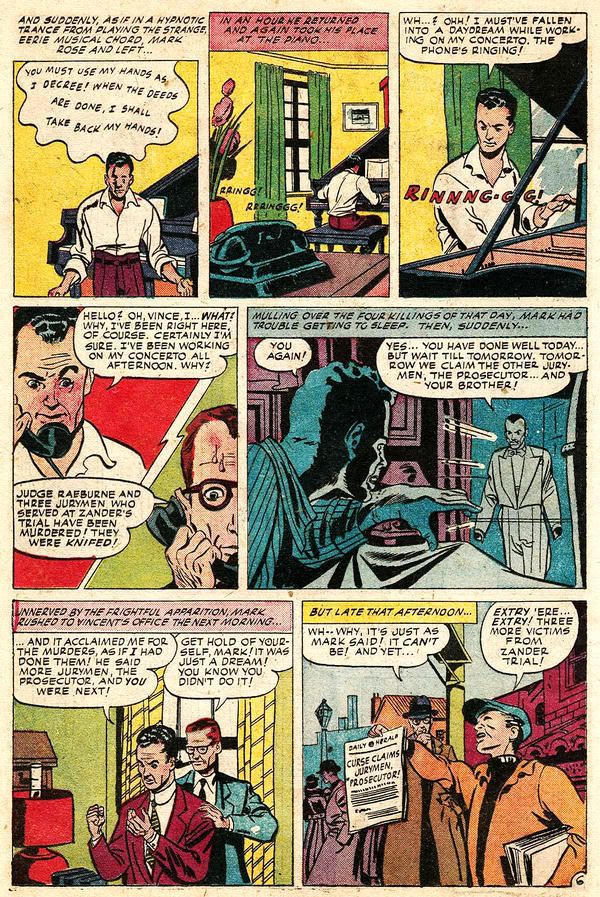Watchmen is generally considered the holy grail of graphic novels, one of the bestselling trade paperback collections in stores. With the Watchmen movie in theaters and getting good reviews, Collected Editions blog readers -- many of whom are new to waiting-for-trades, may be wondering about all the Watchmen products out there, and if you liked Watchmen, what to read next. Here's the Collected Editions run-down:
The Books:
Watchmen: The Absolute Edition
Collected Editions owns the Absolute Watchmen, and if you want the Watchmen experience with all the bells and whistles, this one is for you. At 13 x 9, this hardcover is a good bit larger than the regular paperback (IMAX size, for instance, versus seeing Watchmen in the theater), and includes a bunch of additional information about the history of Watchmen, including promotional art by artist Dave Gibbons, and excerpts from writer Alan Moore's Watchmen scripts. Might be interesting to compare the comic book scripts with the movie, come to think of it. (Read the Collected Editions review of Absolute Watchmen.)
Watchmen
On the other end of the spectrum is the Watchmen softcover, which contains all twelve issues of the original series. This comes in at less than $15 on Amazon, cheaper than most trade paperbacks, so if you want the Watchmen experience without all the frills, this is a fine alternative.
Watchmen: The International Edition
Recently released, this paperback is somewhere in between Absolute Watchmen and the regular edition. It's got some of the retouched pages from the Absolute edition apparently, a new cover, and it may also contain some of the bonus pages from the Absolute edition (though I have conflicting reports on that).
Ancillary Titles:
Watching the Watchmen: The Definitive Companion to the Ultimate Graphic Novel
That this is a book about Watchmen written by Watchmen artist Dave Gibbons is likely just about all most people want to know. Gibbons talks both about working on Watchmen and also offers more promotional and unpublished art from the series. If you're really into Watchmen, this is a great companion.
Watchmen and Philosophy: A Rorschach Test
I'm a fan of these pop culture philosophy books (which also include Superheroes and Philosophy: Truth, Justice, and the Socratic Way). A bunch of philosophers and essayists consider issues of politics and morality (in addition to the most important: is a comic book literature?) in a series of vignettes about Watchmen. A great companion to the book or movie, in my opinion.
The Dark Age: Grim, Great & Gimmicky Post-Modern Comics
This gem from a few years backs talks not just about Watchmen, but the whole grim and gritty era that Watchmen began and that carried through both the economics and storytelling for the comics era in the 1980s and 1990s. Writer Mark Voger looks at Image Comics, Spawn, the deaths of Robin and Superman (and the breaking of Batman's back) in this comics journalism volume.
Background Titles:
The Question: Five Books of Blood
As you may or may not know, the Watchmen characters are based on Charlton Comics characters later bought by DC Comics, including the Question (Rorschach), Blue Beetle (Nite Owl), and Captain Atom (Dr. Manhattan). DC recently replaced the original Question, Vic Sage, with Gotham police detective Renee Montoya, and this is her first solo adventure. It's written by Greg Rucka, one of my favorite writers, and worth a look.
The OMAC Project
Greg Rucka also writes this story of Blue Beetle. Though Beetle only appears in the first chapter of the book, the story deals with his legacy and how he affected other heroes. There's good parallels here between Blue Beetle and Nite Owl's journey in Watchmen.
Captain Atom: Armageddon
This recent Captain Atom volume has him traveling to the Wildstorm Universe (a bit rougher and more Watchmen-esque than the DC Universe). Captain Atom is far more "human" than Dr. Manhattan, but it might be interesting to see on what the Watchmen character was based.
What to Read Next:
Saga of the Swamp Thing, Book 1
A new DC Comics promotion will release single issues that might interest fans of Watchmen -- but why read a single issue when you can get a whole collection? DC's first suggestion is Saga of the Swamp Thing; this ground-breaking horror collection by Watchmen writer Alan Moore contains his first eight Swamp Thing issues.
Transmetropolitan Vol. 1: Back on the Street
Writer Warren Ellis offers this sarcastic post-modern tale of investigative journalist Spider Jerusalem. Funny and cynical, "Transmet" (as it's lovingly called) survived a failed DC science-fiction imprint to later join Vertigo comics, and is one of my favorite series.
Absolute Planetary
It's hard to describe Warren Ellis's Planetary except to say that it's a dark conspiracy-ridden cross between The X-Files and Indiana Jones. Ellis is known for the kind of dark meta-interpretive superhero comics that take their inspiration from Watchmen; if you like Alan Moore, chances are you'll like Warren Ellis.
Preacher Vol. 1: Gone to Texas
Preacher is a dark, violent, urban supernatural western (how's that for a description!) as a fallen preacher travels cross-country with a vampire on a search for God. Fans of Pulp Fiction and Kill Bill will enjoy this thoughtful, gory, take-no-prisoners comic.
Identity Crisis
Of all the books listed above, Identity Crisis is the most "superheroic," involving Superman, Batman, and the rest of the Justice League. Like Watchmen, however, Identity Crisis involves a dark conspiracy among the heroes, leading back to their predecessors; like Watchmen, this story by Brad Meltzer is a serious, human look at the people behind the costumes. (Read the Collected Editions review of Identity Crisis.)
Absolute Dark Knight Returns
How DC could recommend a group of books to go with Watchmen and not mention The Dark Knight Returns is beyond me (collected here with the controversial sequel, The Dark Knight Strikes Back). Published about the same time as Watchmen, this definitive Batman story by Frank Miller (300, The Spirit, Sin City) is credited, with Watchmen, with beginning the grim and gritty era of comics. In a future Cold War America, a criminalized Batman leads an urban revolution against the corrupt government, ending in a famous showdown-to-the-death with Superman.
Extras:
Nite Owl Dark Roast
This Watchmen coffee tickles me every time I see it. Comes in a collectable Watchmen can; I'll probably drink it and then keep the can to refill with store-bought coffee.
Collected Editions blog readers are a knowledgeable bunch -- if you've got questions about Watchmen books that I didn't answer, just leave a question below. And for those who have read the book, what else should new readers try?
More about →
The Books:
Watchmen: The Absolute Edition
Collected Editions owns the Absolute Watchmen, and if you want the Watchmen experience with all the bells and whistles, this one is for you. At 13 x 9, this hardcover is a good bit larger than the regular paperback (IMAX size, for instance, versus seeing Watchmen in the theater), and includes a bunch of additional information about the history of Watchmen, including promotional art by artist Dave Gibbons, and excerpts from writer Alan Moore's Watchmen scripts. Might be interesting to compare the comic book scripts with the movie, come to think of it. (Read the Collected Editions review of Absolute Watchmen.)
Watchmen
On the other end of the spectrum is the Watchmen softcover, which contains all twelve issues of the original series. This comes in at less than $15 on Amazon, cheaper than most trade paperbacks, so if you want the Watchmen experience without all the frills, this is a fine alternative.
Watchmen: The International Edition
Recently released, this paperback is somewhere in between Absolute Watchmen and the regular edition. It's got some of the retouched pages from the Absolute edition apparently, a new cover, and it may also contain some of the bonus pages from the Absolute edition (though I have conflicting reports on that).
Ancillary Titles:
Watching the Watchmen: The Definitive Companion to the Ultimate Graphic Novel
That this is a book about Watchmen written by Watchmen artist Dave Gibbons is likely just about all most people want to know. Gibbons talks both about working on Watchmen and also offers more promotional and unpublished art from the series. If you're really into Watchmen, this is a great companion.
Watchmen and Philosophy: A Rorschach Test
I'm a fan of these pop culture philosophy books (which also include Superheroes and Philosophy: Truth, Justice, and the Socratic Way). A bunch of philosophers and essayists consider issues of politics and morality (in addition to the most important: is a comic book literature?) in a series of vignettes about Watchmen. A great companion to the book or movie, in my opinion.
The Dark Age: Grim, Great & Gimmicky Post-Modern Comics
This gem from a few years backs talks not just about Watchmen, but the whole grim and gritty era that Watchmen began and that carried through both the economics and storytelling for the comics era in the 1980s and 1990s. Writer Mark Voger looks at Image Comics, Spawn, the deaths of Robin and Superman (and the breaking of Batman's back) in this comics journalism volume.
Background Titles:
The Question: Five Books of Blood
As you may or may not know, the Watchmen characters are based on Charlton Comics characters later bought by DC Comics, including the Question (Rorschach), Blue Beetle (Nite Owl), and Captain Atom (Dr. Manhattan). DC recently replaced the original Question, Vic Sage, with Gotham police detective Renee Montoya, and this is her first solo adventure. It's written by Greg Rucka, one of my favorite writers, and worth a look.
The OMAC Project
Greg Rucka also writes this story of Blue Beetle. Though Beetle only appears in the first chapter of the book, the story deals with his legacy and how he affected other heroes. There's good parallels here between Blue Beetle and Nite Owl's journey in Watchmen.
Captain Atom: Armageddon
This recent Captain Atom volume has him traveling to the Wildstorm Universe (a bit rougher and more Watchmen-esque than the DC Universe). Captain Atom is far more "human" than Dr. Manhattan, but it might be interesting to see on what the Watchmen character was based.
What to Read Next:
Saga of the Swamp Thing, Book 1
A new DC Comics promotion will release single issues that might interest fans of Watchmen -- but why read a single issue when you can get a whole collection? DC's first suggestion is Saga of the Swamp Thing; this ground-breaking horror collection by Watchmen writer Alan Moore contains his first eight Swamp Thing issues.
Transmetropolitan Vol. 1: Back on the Street
Writer Warren Ellis offers this sarcastic post-modern tale of investigative journalist Spider Jerusalem. Funny and cynical, "Transmet" (as it's lovingly called) survived a failed DC science-fiction imprint to later join Vertigo comics, and is one of my favorite series.
Absolute Planetary
It's hard to describe Warren Ellis's Planetary except to say that it's a dark conspiracy-ridden cross between The X-Files and Indiana Jones. Ellis is known for the kind of dark meta-interpretive superhero comics that take their inspiration from Watchmen; if you like Alan Moore, chances are you'll like Warren Ellis.
Preacher Vol. 1: Gone to Texas
Preacher is a dark, violent, urban supernatural western (how's that for a description!) as a fallen preacher travels cross-country with a vampire on a search for God. Fans of Pulp Fiction and Kill Bill will enjoy this thoughtful, gory, take-no-prisoners comic.
Identity Crisis
Of all the books listed above, Identity Crisis is the most "superheroic," involving Superman, Batman, and the rest of the Justice League. Like Watchmen, however, Identity Crisis involves a dark conspiracy among the heroes, leading back to their predecessors; like Watchmen, this story by Brad Meltzer is a serious, human look at the people behind the costumes. (Read the Collected Editions review of Identity Crisis.)
Absolute Dark Knight Returns
How DC could recommend a group of books to go with Watchmen and not mention The Dark Knight Returns is beyond me (collected here with the controversial sequel, The Dark Knight Strikes Back). Published about the same time as Watchmen, this definitive Batman story by Frank Miller (300, The Spirit, Sin City) is credited, with Watchmen, with beginning the grim and gritty era of comics. In a future Cold War America, a criminalized Batman leads an urban revolution against the corrupt government, ending in a famous showdown-to-the-death with Superman.
Extras:
Nite Owl Dark Roast
This Watchmen coffee tickles me every time I see it. Comes in a collectable Watchmen can; I'll probably drink it and then keep the can to refill with store-bought coffee.
Collected Editions blog readers are a knowledgeable bunch -- if you've got questions about Watchmen books that I didn't answer, just leave a question below. And for those who have read the book, what else should new readers try?



















